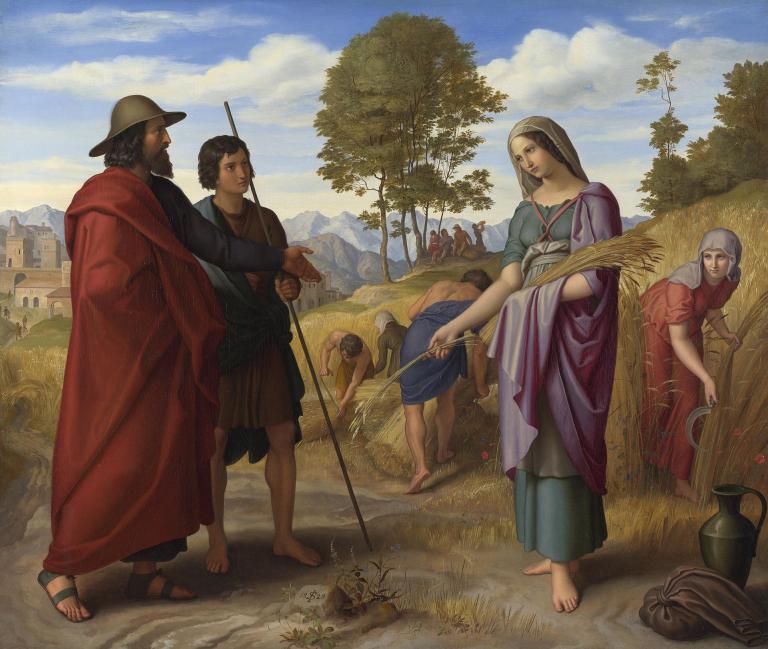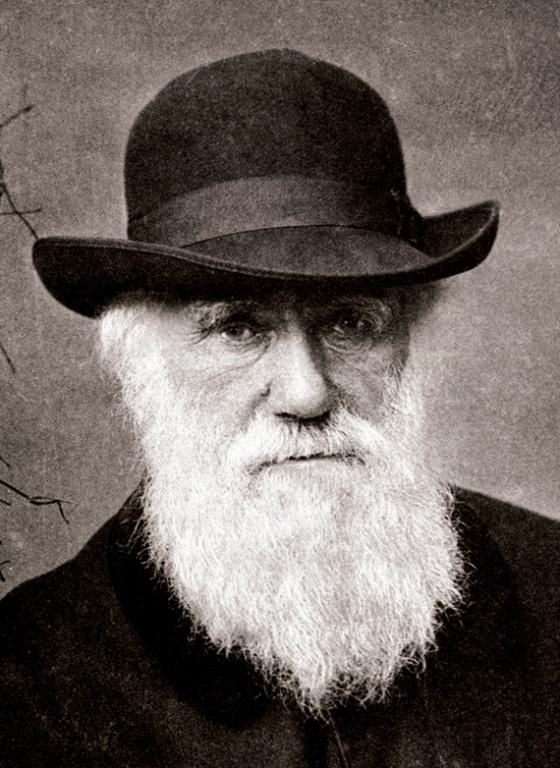
Wikimedia Commons public domain image
It’s Friday, so a new article has been published in Interpreter: A Journal of Latter-day Saint Faith and Scholarship: “The “Allegory” of Ruth as a Prophecy of Latter-day Gathering,” written by Jan Francisco
Abstract: In the historical context of the late fifth century BC, the book of Ruth was a powerful story of hope and redemption for the eventual gathering and restoration of Israel’s covenants. Connecting their golden period of unity under King David to this idyllic tale with a beautiful happy ending may be more than a family story. It could also be read allegorically to prophesy the promised gathering of Israel by the Gentiles in the Latter-days. The key to understanding the symbolic layer of this story lies in deciphering the Hebrew meanings of the characters’ names, with Naomi representing the Israelites, and Ruth the Gentiles. Doing so unlocks the messages in the story of the Gentiles gathering Israel, the marriage relationship of Christ and the Church, and the promise of a Millennial Messiah. Exploring the connection of the book of Ruth, Pentecost, and harvest themes adds more significance to this allegory.
The article above is accompanied, on the website of the Interpreter Foundation, by “Interpreting Interpreter: Gathering a Gentile Ruth,” which was written by Kyler Rasmussen:
This post is a summary of the article “The “Allegory” of Ruth as a Prophecy of Latter-day Gathering” by Jan Francisco in Volume 63 of Interpreter: A Journal of Latter-day Saint Faith and Scholarship. All of the Interpreting Interpreter articles may be seen at https://interpreterfoundation.org/category/summaries/. An introduction to the Interpreting Interpreter series is available at https://interpreterfoundation.org/interpreting-interpreter-on-abstracting-thought/.
A video introduction to this Interpreter article is now available on all of our social media channels, including on YouTube at https://youtube.com/shorts/8dgj_ZUdgd8.
The Takeaway: Francisco outlines an interpretation of the story of Ruth where it represents Christ (Boaz) gathering in faithful gentiles (Ruth) into the House of Israel (the family of Naomi), helping to support and restore that house after it abandons its covenant status, as fulfilled via the Latter-day restoration of the Gospel.

(Wikimedia Commons public domain image)
I’ve just begun reading Martin Hilbert, A Catholic Case for Intelligent Design (Seattle: Discovery Institute, 2024). Born in Prague, Czechoslovakia, Father Hilbert, who is a priest of the Oratory of St. Philip Neri in Toronto, emigrated to Canada as a child in the wake of the Soviet invasion of his country that occurred on 20 August 1968. He holds an MASc in electrical engineering and a PhD in the history and philosophy of science from the University of Toronto.
I share here a couple of passages about the history of evolutionary thought in biology that I thought might be of interest:
In late antiquity, Augustine famously introduced the notion of “seminal reasons” to explain how God could be said to create at the beginning things that would only be visibly present in later ages. Just as seeds develop into plants over time, so one created reality could give rise to another as history unfolds. In the fifteenth century, the rediscovery of Lucretius’s long poem De Rerum Natura (On the Nature of Things), presenting an atomistic/materialistic/evolutionary account of the origin of life, may have sown the seeds of materialistic evolutionary speculation in Europe, though if so, the seeds were very slow to sprout. (Chapter 2)
Augustine’s idea of “seminal reasons” (rationes seminales) strikes me as potentially quite helpful for reconciling belief in divine creation with some sort of organic evolution. In particular, I think it’s interesting in connection with such phenomena as the famous “Cambrian explosion.”
Father Hilbert also talks about the two great founders of nineteenth-century evolutionary theory, Charles Darwin and the unfortunately somewhat neglected but very interesting Alfred Russel Wallace, whose independent formulation of a concept of biological evolution impelled Darwin to publish his own theory so as not to forfeit the credit for it:
Darwin published his Origin of Species in 1859, and it is his name that we now associate with evolution. Darwin was the first to conceive of the theory; and, unlike Wallace, he came from the upper echelons of British society. His mother was from the immensely wealthy Wedgewood family; and he married his cousin Emma Wedgewood. Wallace was abroad doing field work whereas Darwin was right in the heart of England, and as a gentleman of independent means had considerable leisure time to advocate for his theory in subsequent books and through a voluminous correspondence with top scientists in England, Europe, and the United States. Finally, Darwin insisted that his theory could account for all life, even for all the faculties of human beings, a view Wallace ultimately rejected. For all these reasons Darwin, rather than Wallace, become the clear-cut choice for patron saint of modern evolutionary materialism. (Chapter 2)

(Wikimedia Commons public domain image)
Even right in the middle of the Winter Solstice holiday, theists and theism continue to wage war on decent people who are otherwise just trying to mind their own business. Here is an example of such shameless misbehavior that I’ve taken from the Christopher Hitchens Memorial “How Religion Poisons Everything” File™: “The Church of Jesus Christ Provides Humanitarian Aid After Flooding in Panama”
But, of course, religion’s crimes against humanity are cruelly distributed throughout the entire year. Here are some examples that, again, have been drawn from the Hitchens File: “Giving Gifts of Love: The Church of Jesus Christ in 2024”
And, thanks to a tip from Dr. Lynn Johnson, I’m also able to share this article from the Hitchens File: Eleonora Papaleontiou-Louca, “Religiosity: Is It Mainly Linked to Mental Health or to Psychopathology?” Religions 15 (2024):
Abstract: The impact of religiosity on human mental health has been much debated over the last few decades. A large number of empirical and theoretical studies have been conducted to understand the impact of religiosity and spirituality on people’s quality of mental health. Though the vast majority of research indicates that religiosity makes a positive contribution to a person’s mental health and can give meaning to life, both the positive and some negative effects of religiosity on mental health are discussed. The impact of religiosity on people’s mental health seems to correspond to the quality of their religiosity.
Eleonora Papaleontiou-Louca is affiliated with the Department of Social and Behavioral Sciences of the European University, in Nicosia, Cyprus.













